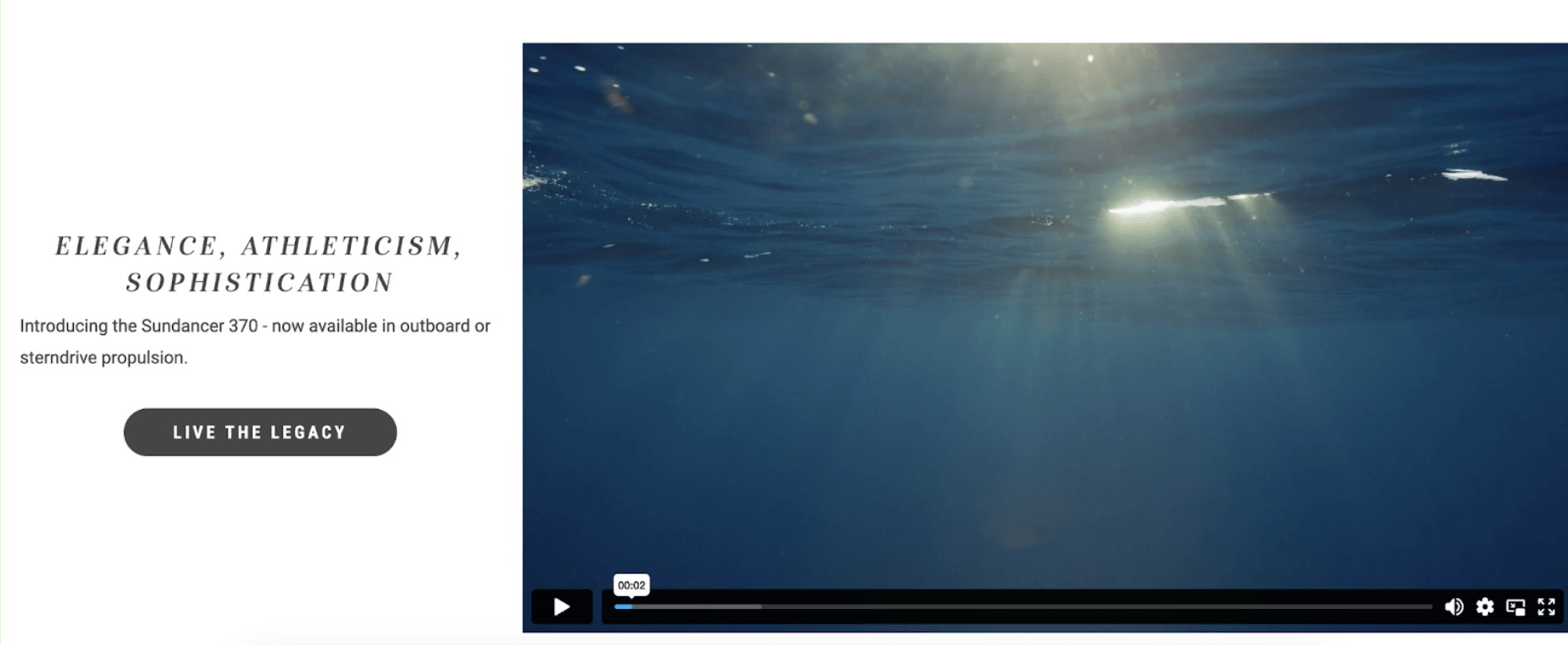
Utilising video is a great way to gain exposure and expand your reach further. It is also a great way to drive traffic to your site, build links, own more real estate in the SERPs and gain video postings within the blended search results.
You can post videos onsite, offsite or both. With respect to SEO, it can sometimes be better to have the video onsite so that any links gained will benefit you and not YouTube or any other video hosting site you decide to use. That said, every situation is different and depending on your goals, best practice differs.
What is Video SEO?
Video SEO is the process of optimising your videos so that they rank higher in search engine results pages (SERPs). When people search for videos on YouTube, Google, TikTok, or other search engines, you want your videos to be among the first ones they see.
Why is Video SEO Important?
There are many reasons why video SEO is important. Here are just a few:
- Increased visibility: When your videos rank higher in SERPs, more people will see them. This can lead to increased website traffic, brand awareness, and sales.
- Improved engagement: Videos are more engaging than text or images, so they are more likely to capture people’s attention and keep them on your website.
- Better user experience: Videos can provide a more informative and engaging user experience than text or images alone.
- Stronger brand building: Videos can help you tell your brand story and connect with your audience on a deeper level.
How to Optimise Your Videos for SEO
There are a number of things you can do to optimise your videos for SEO. Here are some of the most important:
- Keyword research: The first step is to identify the keywords that your target audience is searching for. You can use keyword research tools like Google Keyword Planner or Ahrefs to find relevant keywords.
- Optimise your title and description: Your video title and description should be clear, concise, and include your target keywords. The title should be attention-grabbing and accurately reflect the content of your video. The description should provide a more detailed overview of your video and include a call to action (CTA).
- Use tags: Tags are keywords that help people find your videos. Use a mix of broad and specific tags to reach a wider audience.
- Create high-quality content: Your videos should be well-produced, informative, and engaging. People are more likely to watch and share videos that they find valuable. Create high-quality content: Your videos should be well-produced, informative, and engaging. People are more likely to watch and share videos that they find valuable. Using a reliable video editing tool can significantly enhance the quality of your content by ensuring smooth transitions, crisp visuals, and professional audio.
- Use end screens and cards: End screens and cards are a great way to promote other videos on your channel and keep people watching. End screens appear at the end of your video, while cards appear throughout your video.
- Promote your videos: Once you’ve created a great video, don’t just sit back and wait for people to find it. Promote your videos on social media, your website, and other online platforms.
Video-Sharing Platforms vs. Your Own Website
There are pros and cons to both using a video-sharing platform like YouTube or Vimeo and posting the videos directly on your website.
The best option depends on your goals. If you prioritise reach, discovery, and community, a video-sharing platform is a great choice. If you prioritise control, data ownership, and a niche audience, posting on your website might be better. You can even consider a hybrid approach, using a platform to reach a wider audience and then embedding those videos on your website for a more controlled experience.

Good Video-Sharing Platforms & Apps To Use
Good sites to use:
- YouTube
- TikTok
- DailyMotion
- Vimeo
Advantages of video-sharing sites include:
- Vast amounts of traffic
- Easy to share
- Easy to upload video
Disadvantages include:
- Videos aren’t watched on your site
- Ads appear on your content
Although there are some disadvantages, the advantages are plenty and there are ways to drive people to your site and lessen the negatives of hosting video on a third-party site.

How To Drive Viewers From Your Video To Your Site
Getting video impressions is great, but the idea behind using video for marketing is that it drives users to engage, be taken to your website and then hopefully convert into customers. Here are three ideas to help you achieve this:
- Putting smaller versions of your videos on video–sharing sites, and longer or ‘full’ versions on your own site will act as an incentive and encourage viewers to visit your site to watch the whole video.
- Offering well-edited, high-definition videos can also help draw people to your site. Video–sharing sites often compress video to a lower quality format and hence offering high–definition versions on your own site will act as another incentive.
- Having complementary materials to your video on-site also helps draw viewers in.
Social Media Video SEO
Social media platforms are another battleground for video SEO, although their are some similarities, the tactics do differ slightly from traditional search engines. Here’s what to consider for social media video SEO:
Understanding Social Media Algorithms
Each social media platform prioritises content differently in user feeds. Understanding these algorithms is crucial for getting your videos seen. Focus on creating content that aligns with the platform’s user behaviour and trends.
Use Keywords & Hashtags
While keyword research is still important, hashtags are king on social media. Use a mix of popular and niche hashtags to reach a targeted audience but avoid stuffing your captions.
Keep Captions And Descriptions Short
Craft compelling captions that entice viewers to watch and engage. Briefly describe your video content and incorporate relevant keywords naturally. If you’re posting a video on these platforms, the focus should be on the video – not the text.
Engagement Is Key
Social media thrives on interaction. Encourage comments, shares, and replies to boost your video’s visibility in the algorithm. Respond to comments and participate in discussions to build a community.
Leverage Platform Features
Many platforms offer features specifically designed for video discovery. Utilise tools like Instagram Stories, YouTube Shorts, or TikTok trends to gain traction, but most importantly – have some fun with it.
@duolingo sad g(owl) hours #duoplushie #duolingo #languagelearning #emo ♬ Rio romeo – .’★
Promote Across Platforms
Share your video across your various social media channels to maximise reach. Consider tailoring the caption or intro slightly to fit each platform’s audience and style. This omnichannel social media marketing approach is great for brand consistency and reinforcing your brand in the minds of the users.
Track and Analyse
Social media platforms offer analytics to understand your video performance. Track metrics like views, engagement, and click-through rates to see what resonates with your audience and refine your strategy.
9 Best Practices For Video SEO:
- Always watermark the video with your brand name and URL so the audience can easily click through to your site.
- A call to action placed in the video can also be positive and can help to steer the audience to your site.
- When using a YouTube channel, be sure to upload videos regularly as inactive accounts do not carry the same benefits and can present a negative image.
- Use descriptive file names to give the viewers and search engines a better understanding of what the video is about.
- Avoid duplicate titles when distributing the same video to various sources, as the search engines will consider this as duplicate content and be unable to determine which video to provide in the SERPs. Using different titles and variations can help you to avoid this issue.
- Your video thumbnail is the first thing people will see, so it’s important to make it eye-catching and relevant to your video content.
- Transcribing your videos will help people find your videos through search engines, and it will also make your videos more accessible to people who are deaf or hard of hearing.
- A video sitemap is a file that tells search engines about all of the videos on your website. This can help search engines index your videos more easily.
- It’s important to track your video SEO results so that you can see what’s working and what’s not. You can use YouTube Analytics or other video analytics tools to track your video views, engagement, and traffic.
5 Additional Best Practices For Video Metadata:
Video metadata is like a hidden tag that describes a video. It helps search engines and platforms understand what the video is about. This allows them to show relevant videos to users and suggest similar content.
Here’s how to optimise your metadata:
- Provide as much information as possible to the third–party sites hosting your video. Fields such as the title and description are a good opportunity to use targeted keywords and descriptions. The more information you’re giving these sites the better, as this is how they understand the content and determine where and when to show it.
- A catchy title is a great way to draw the audience in, letting them know immediately what the video is about and if it will be relevant to them.
- Use a mix of broad and specific tags relevant to your video. Don’t stuff with irrelevant tags, focus on accuracy.
- Identify relevant keywords people use to search for videos related to your content. There are many free and paid keyword research tools available.
- Choose the category on the platform that best fits your video content.
In Conclusion
Optimising your videos for SEO can significantly boost your online presence. By implementing these strategies, you’ll increase your video’s visibility in search results, attract a larger audience, and achieve your video marketing goals.
Remember, SEO is an ongoing process. Regularly creating high-quality content, strategically using keywords, and promoting your videos will lead to long-term success.



